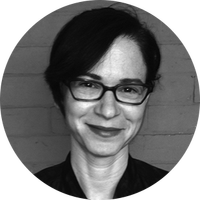8 symbols that we turned into words
How / and ♥ became words in their own right


1. Slash
A recent article by Anne Curzan explains how the slash (/) has become a proper word among young people. Her students not only speak the word slash in places where the symbol would be found in writing, they write it out instead of using the symbol in status updates and text messages. (Does anyone care if my cousin comes visits slash stays with us Friday night?) Even more interesting, slash has taken on a different meaning than the and/or one implied by the symbol. It can be used to follow up on a comment, or add an afterthought. (I really love that hot dog place on Liberty Street. Slash can we go there tomorrow?) To Curzan this development of a new kind of conjunction is "like a rare bird sighting in the world of linguistics: An innovation in the slang of young people embedding itself as a function word in the language."
2. Heart
The Week
Escape your echo chamber. Get the facts behind the news, plus analysis from multiple perspectives.

Sign up for The Week's Free Newsletters
From our morning news briefing to a weekly Good News Newsletter, get the best of The Week delivered directly to your inbox.
From our morning news briefing to a weekly Good News Newsletter, get the best of The Week delivered directly to your inbox.
The heart probably first made its way into written language with the classic "I ♥ Mom" tattoo, but it became really prominent during the 1970s "I Love New York" tourism campaign. The logo for the campaign substituted a red heart for the word love, and soon imitators were putting it on mugs and T-shirts proclaiming love for all kinds of things. Then the symbol turned back into a word, not meaning love, but heart. This seems to have begun with the 2004 movie I ♥ Huckabees, which was read out loud as "I Heart Huckabees" (though it was also called "I Love Huckabees"). Now people heart to heart everything. They heart it so much.
3. Hashtag
The hash (#) symbol took on special importance in Twitter for its use in hashtags, keys that could be used to group or organize tweets. Hashtags soon became a way for people to make meta-comments or asides about what they were saying ("Watching wheel of fortune and eating oreos #livingthedream"). People started introducing hashtags in their speech by saying the word hashtag and then, to bring it full circle, started writing the word hashtag to introduce meta-comments ("Yay for the selfie screen on vine. Hashtag so excited!"), even when they could have used the much more economical (#).
4. Dot dot dot
A free daily email with the biggest news stories of the day – and the best features from TheWeek.com
The ellipsis (...) is a useful way to indicate a pause or, at the end of a sentence, to hint that there is more to say, but you're not going to say it right now. It's perfect for coy social media dialogue. Lately those who want to really emphasize the coyness or the awkwardness that an ellipsis can represent, as well as show that they are well aware they are taking advantage of those functions, write it out as dot dot dot ("I need more friends to hang out with because when my like 4 friends are busy I'm just like dot dot dot"). It can even be used along with ellipses ("I'm wearing children's size 10-2 socks right now..... Yea, dot dot dot....")
5. Period
Not all of our symbols-turned-words come from the modern era of social media. Since the beginning of the 20th century, the period (.) punctuation mark has been used as the adverb period, indicating "end of story; nothing more to say about it": "I have never and will never ride a jet ski, period."
6. Quote-unquote
Quote-unquote has also been around for a while. At first the words more closely followed the structure of the actual quote symbols, with the quoted (or ironically quoted) words appearing between quote and unquote, but it became a compound, similar to so-called, that no longer follows the rules of actual quotation marks.
7. Blankety blank
Blankety blank does not really refer to the symbol for a blank (_______), but for what would be filled into that blank if it weren't for propriety's sake. ("This blankety blank car won't blankety blank start!") The reduplication makes it more fun to say, offering some of the psychological release afforded by the words it replaces.
8. Z's
The origin of the phrase "gotta catch some z's" is probably in comic books, where sleeping characters were depicted with a line of z's over their heads. This makes it a bit different from letter phrases that come from acronyms, like LOL or OMG, because the letter in this case doesn't stand for a word, but an image, the letter z as a symbol.
Arika Okrent is editor-at-large at TheWeek.com and a frequent contributor to Mental Floss. She is the author of In the Land of Invented Languages, a history of the attempt to build a better language. She holds a doctorate in linguistics and a first-level certification in Klingon. Follow her on Twitter.
-
 ‘Let 2026 be a year of reckoning’
‘Let 2026 be a year of reckoning’Instant Opinion Opinion, comment and editorials of the day
-
 Why is Iran facing its biggest protests in years?
Why is Iran facing its biggest protests in years?TODAY’S BIG QUESTION Iranians are taking to the streets as a growing movement of civic unrest threatens a fragile stability
-
 How prediction markets have spread to politics
How prediction markets have spread to politicsThe explainer Everything’s a gamble
